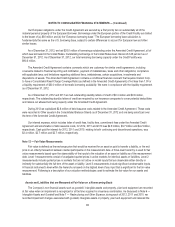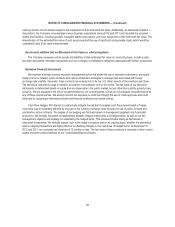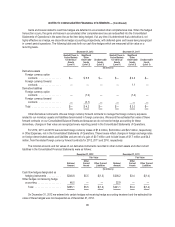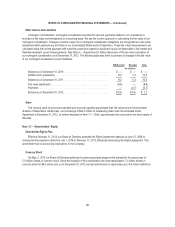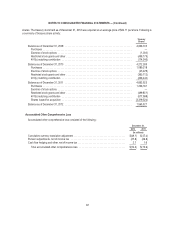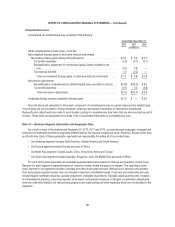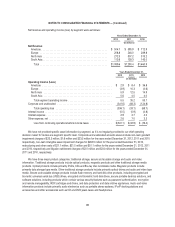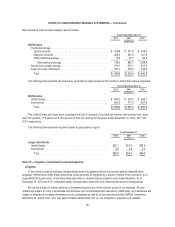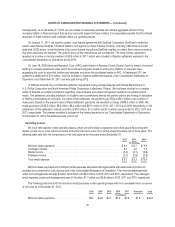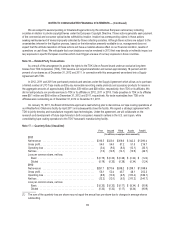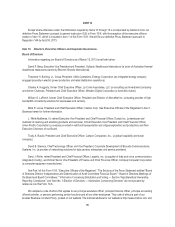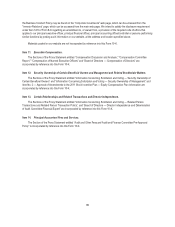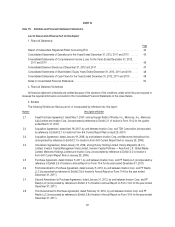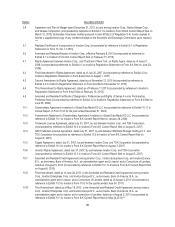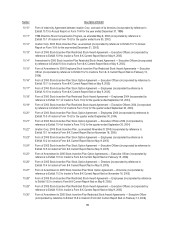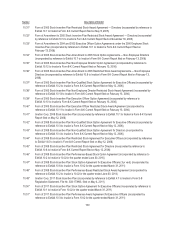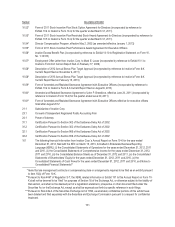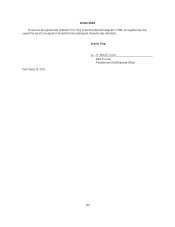Memorex 2012 Annual Report Download - page 95
Download and view the complete annual report
Please find page 95 of the 2012 Memorex annual report below. You can navigate through the pages in the report by either clicking on the pages listed below, or by using the keyword search tool below to find specific information within the annual report.NOTES TO CONSOLIDATED FINANCIAL STATEMENTS — (Continued)
Minimum payments have not been reduced by minimum sublease rentals of approximately $0.5 million due in the future
under non-cancelable lease agreements.
Environmental Matters
Our operations are subject to a wide range of federal, state and local environmental laws. Environmental remediation
costs are accrued when a probable liability has been determined and the amount of such liability has been reasonably
estimated. These accruals are reviewed periodically as remediation and investigatory activities proceed and are adjusted
accordingly. Compliance with environmental regulations has not had a material adverse effect on our financial results. As of
December 31, 2012, we had environmental-related accruals totaling $0.4 million recorded in other liabilities and we have
minor remedial activities underway at one of our prior manufacturing facilities. We believe that our accruals are adequate,
though it is reasonably possible that the ultimate amount of expense relating to remediation actions and compliance with
applicable environmental laws could have a material impact on our results of operations.
Copyright Levies
In many European Union (EU) member countries, the sale of recordable optical media is subject to a private copyright
levy. The levies are intended to compensate copyright holders for “fair compensation” for the harm caused by private copies
made by natural persons of protected works under the European Copyright Directive, which became effective in 2002
(Directive). Levies are generally charged directly to the importer of the product upon the sale of the products. Payers of levies
remit levy payments to collecting societies which, in turn, are intended to distribute funds to copyright holders. Levy systems
of EU member countries must comply with the Directive, but individual member countries are responsible for administering
their own systems. Since implementation, the levy systems have been the subject of numerous litigation and law making
activities. On October 21, 2010, the European Court of Justice (ECJ) ruled that fair compensation is an autonomous
European law concept that was introduced by the Directive and must be uniformly applied in all EU member states. The ECJ
stated that fair compensation must be calculated based on the harm caused to the authors of protected works by private
copying. The ECJ also stated that the indiscriminate application of the private copying levy to devices not made available to
private users and clearly reserved for uses other than private copying is incompatible with the Directive. The ECJ ruling made
clear that copyright holders are only entitled to fair compensation payments (funded by levy payments made by the Company)
when sales of optical media are made to natural persons intending to make private copies.
Since the Directive was implemented in 2002, we have paid approximately $100 million in levies to various ongoing
collecting societies related to professional and commercial sales. Based on the ECJ’s October 2010 ruling and subsequent
litigation and law making activities, we believe that these payments were not consistent with the Directive and should not have
been paid to the various collecting societies. Accordingly, in 2010 we began withholding levy payments on consumer product
sales to the various collecting societies. However, we continued to accrue a liability for levies arising from consumer product
sales. As of December 31, 2012 and 2011, we had recorded a liability of $27.7 million and $19.7 million, respectively,
associated with levies related to consumer product sales for which we are withholding payment. At December 31, 2012, the
recovery of some or all of the approximately $100 million of copyright levies previously paid on professional and commercial
sales represents a gain contingency that has not yet met the required criteria for recognition in our financial statements. There
is no assurance that we will realize any of this gain contingency.
Since the October 2010 ECJ ruling, we quarterly evaluate on a country-by-country basis whether (i) levies should be
accrued on current period commercial and/or consumer channel sales; and, (ii) accrued, but unpaid, copyright levies on prior
period consumer product sales should be reversed. Our evaluation is made on a jurisdiction-by-jurisdiction basis and
considers ongoing and cumulative developments related to levy litigation and law making activities within each jurisdiction as
well as throughout the EU. Cost of goods sold for the year ended December 31, 2011 was reduced by $7.8 million due to
reversal of prior year obligations that were determined to be remote. We did not reverse any amounts into cost of goods sold
for prior year obligations in 2012.
92



